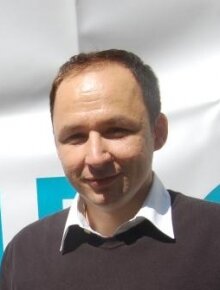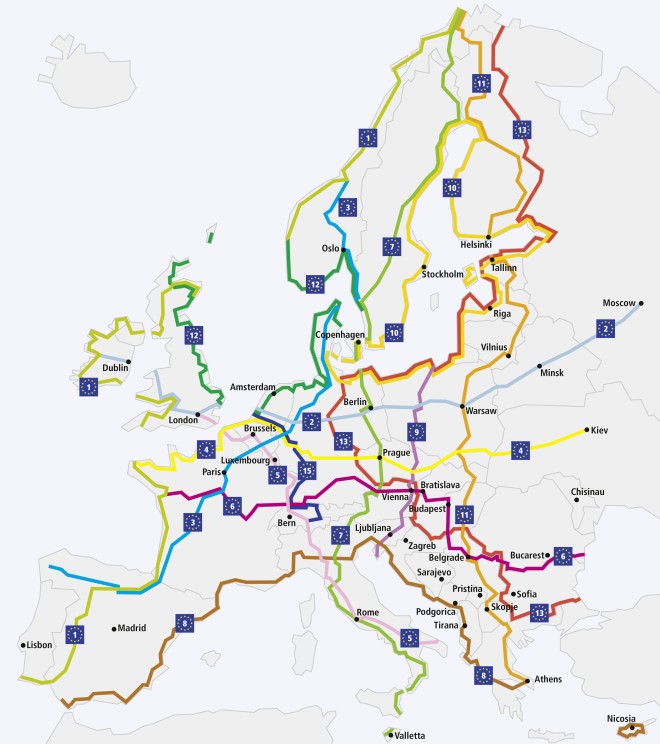
"Bicycle Tourists Spend More"- EuroVelo’s Cousins Across the Atlantic
Cycling Tourism is a hot topic this year at Velo-city, and Europe could learn a few things from North America. Adam Bodor reports from Vancouver after speaking.
My first bicycle was given to me at time when there was an’ iron curtain’ dividing Europe. I was a 7 year-old growing up in communist Hungary and I almost had the border guards in Czechoslovakia take my bicycle off me if it weren’t for my father’s quick thinking. Fast forwarding to today, the Iron Curtain trail is now famous for different reasons. It’s one of Europe’s favourite bicycle tourism trails.
I gave some rather impressive figures to the audience. And they were amazed. For example, bicycle tourists in Europe generate €54 billion per year in economic benefits. And I also explained how the image of bicycle tourism is changing. It’s no longer about hard-core cyclists in tents.
But enough of Europe. The conference also provides a fantastic opportunity for me to find out about the similar projects being undertaken across the Atlantic.

The Joys of Bicycle Tourism
The Adventure Cycling Association (ACA) in the USA have for many years been developing the Adventure Cycling Route Network (and the connected US Bike Route System), whilst across the border in Canada a similar cycle route network is taking shape in Quebec – Le Route verte. It’s interesting to compare the approaches being taken with EuroVelo’s North American ‘cousins’.
Started back in 1976, ACA's Routes Network carefully links together rural roads to create low-traffic bike routes through some of the nation's most scenic and historically significant landscape. As with EuroVelo, it is based on themed routes, such as the TransAmerica Bicycle Trail and the Lewis and Clarke Bicycle Trail. It has grown to become a network of 41,399 miles (approx. 66,625km) and now visits most US states.
Whilst the Adventure Cycling Route Network was conceived for cycle tourists, the associated US Bike Route System (USBRS) is aimed more at general mobility and intended to link urban, suburban and rural areas using a variety of infrastructure. A National Corridor Plan has been prepared identifying corridors for cross-country routes, linking key destinations, cities and transportation hubs. The task is now to turn the corridors into reality, enlisting support from the relevant State Governments.
North of the Border in Canada, the Route verte was unveiled to the public back to 1992. In 1995, the Government of Québec announced that it would collaborate with Vélo Québec on the planning and construction of the Route verte, investing $88.5 million (€68.5 million) over ten years to develop a bikeway over 4,000 kilometres in length linking all parts of Québec.
“Cycling can be a boost for local & regional economy,” said Jean-Francois Pronovost, Vice-President of Vélo Quebec before adding, “And they spend more!”
I couldn't agree more! As in Europe, one of the key lobbying tools used by Vélo Québec in their work is to refer to the economic impacts of the cycle route network. Vélo Québec estimates that following the inauguration of the Route verte in 2006, the amount spent annually by users totalled $134 million (€105 million). This spending would generate over $38 million (€30 million) in government revenues and help support 2,861 jobs (person years). Impressive stuff!
So, although they are separated by 4,000km of water it is pleasing to hear that progress is being made on both sides of the Atlantic to develop cycling route networks. I've loved swapping anecdotes and sharing ideas with these leaders in bicycle tourism.
And it’s all thanks to European funding that we made it here to learn so much. A huge thanks to Melanie Vidin from Demarrage for getting us here.
 About the Author
About the Author
Adam Bodor has worked for the European Cyclists` Federation (ECF) since 2010 and is currently the Director of EuroVelo, Cycling Tourism, and Regional Policy.
Live Coverage from Velo-city
ECF is reporting this story live from the world’s largest cycling policy in Vancouver, Canada where nearly 1,000 of the cycling world’s best and brightest have gathered for four days to talk cycling. You can read more stories from our Velo-city live page and tweet #velocity2012 to join in the conversation.
About Demerrage
There was also a separate EuroVelo-related workshop given by Melanie Vidin looking at the Demarrage project. This transnational project, co-financed by the European Regional Development Fund through Interreg IVB, is developing promotional tools related to EuroVelo 15 – the Rhine Route. The workshop will concentrate on some of the main outputs of the Demarrage project, including the dedicated route web portal and a route certification process, both of which can be adapted for use on other EuroVelo routes.
Want another conference…
The European Cyclists’ Federation (ECF) and the European Greenways Association (EGWA) will be jointly hosting the first ever EuroVelo, Greenways and Cycling Tourism Conference in Nantes, France on Wednesday 26th September 2012. To find out more information or to register please click here.
Contact the author
Recent news!
Upcoming events
Contact Us
Avenue des Arts, 7-8
Postal address: Rue de la Charité, 22
1210 Brussels, Belgium










